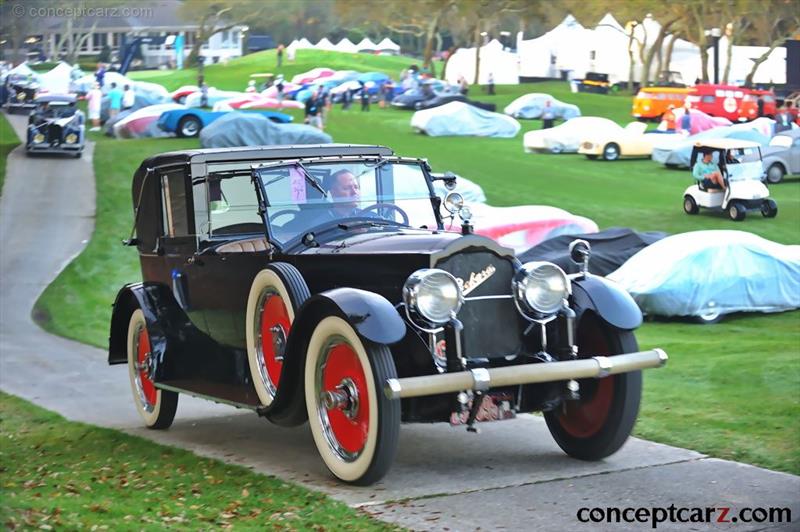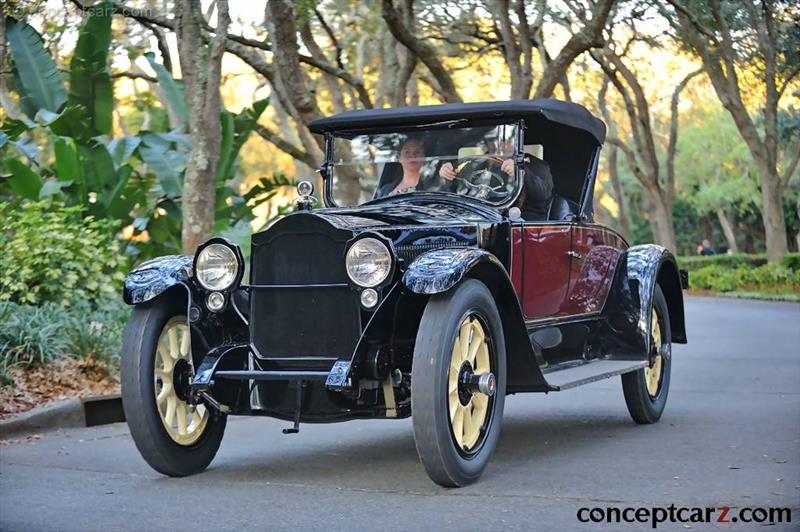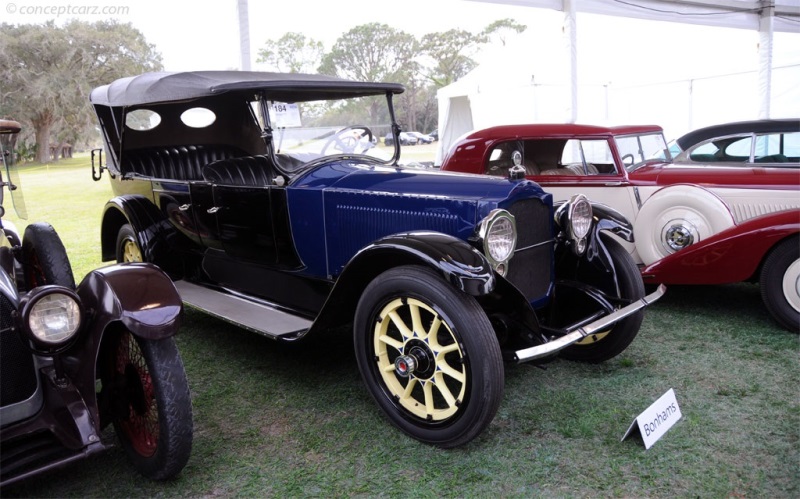1920 Packard Twin Six 3-35 Navigation
Packard quickly established a reputation as the maker of one of the world's finest motorcars, reinforced by a string of well-engineered and well-constructed models since its inception in 1899. Originally located in Warren, Ohio, the company blossomed when it moved to Detroit, Michigan in 1905. That same year, its one-cylinder and two-cylinder mid-engine machines were replaced by more refined four-cylinder models. The four-cylinder Model 30 followed in 1907, offering greater performance and many improvements over the preceding models. The valves were larger, the front wheels used ball, instead of roller bearings, and the valve chambers and cylinder tops now had a flat top instead of the previous dome. The 431.9 CID T-head four-cylinder engine had solid valve lifters, three main bearings, and delivered 30 horsepower at 650 RPM. Despite the impressive performance of the Model 30, Packard soldiered on with a new six-cylinder car for 1912. 
Dual-Winshield Phaeton
View info and historyInitially, Packard's six was known simply as the 'Six,' later taking the '48' as its name. Cast in three blocks of two, the T-head six displaced 525 cubic inches, used four main bearings, had mechanical valve lifters, and delivered 74 horsepower at 1,7200 RPM. With sights set on pushing the envelope further, engineer Jessee Vincent worked on a new twelve-cylinder model. Packard harnessed its experience and expertise gained through building v-type aircraft and marine engines to help overcome the numerous obstacles and challenges with producing such an engine at the time. Competition from other marques was relentless, inspiring Packard at every turn. Cadillac introduced a 314.5 CID V-8 engine in 1915, delivering 70 horsepower at 2,400 RPM. It was hoped that Packard's new twelve-cylinder engine would place it at the forefront of the world's auto manufacturers.As 1915 was coming to a close, production began on a new model christened the 'Twin Six.' It was smooth and powerful, with two cast iron blocks of six, an L-head configuration, a Packard pressure-feed carburetor, and three main bearings. It displaced 424.1 cubic inches and delivered 88 horsepower at 2,600 RPM. Wheelbase sizes of 125- and 136-inches were offered, and body styles ranged from 2 to 7 passengers, from coupes to limousines, and from Broughams to Phaetons. The 125-inch platform grew to 126 inches in 1917, then to 128 the following year. 
Tourer
Chassis #: 160466
Engine #: 160466
View info and history
Auction entries : 1The V-12 engine would be the sole Packard powerplant from 1916 through 1921 when it was joined by the Single Six, a more economical alternative to its larger 12-cylinder sibling. The 128-inch platform was phased out in 1919, with a final example being built in 1920. The larger 136-inch platform continued through 1923. Body styles in 1920 included a seven-passenger sedan, Duplex Sedan, Tourer, and Limousine. There was also a five-passenger phaeton, coupe, and Duplex Coupe, and a four-passenger Runabout. Prices ranged from $5,500 to $8,000. Prices would continue to decrease over the next few years due to the postwar recession. The 424.1 cubic-inch V-12 engine now developed 90 horsepower at 2,600 RPM. New this year was a 'Fuelizer' that incorporated a spark plug in the intake manifold to aid in vaporizing the gasoline. The engine was backed by a three-speed selective-sliding transmission with multiple disc clutch and spiral bevel gears. Stopping power was provided by mechanical brakes on the rear wheels. Packard produced 5,193 examples of its Twin Six in 1920, followed by 1,310 in 1921 and 1,944 the following year. In 1923, the final year of the Twin Six, a total of 303 examples were constructed.
Runabout
View info and historyIn 1924, Packard introduced eight-cylinder models and four-wheel brakes. Wheelbase options included a 136- and 143-inch platform. The eight-cylinder model would be the only option offered by Packard until the Twin Six model was introduced at the New York Auto Show in January of 1932. This was Packard's entry in the multi-cylinder race, ignited by Cadillac with its V16 and V12 models. Packard Twin Six was a twelve-cylinder model with a 67-degree V-block, a cast iron monoblock, aluminum alloy pistons, four main bearings, a Stromberg-Duplex carburetor, and produced 160 horsepower.
by Daniel Vaughan | Dec 2020

Dual-Winshield Phaeton
View info and history
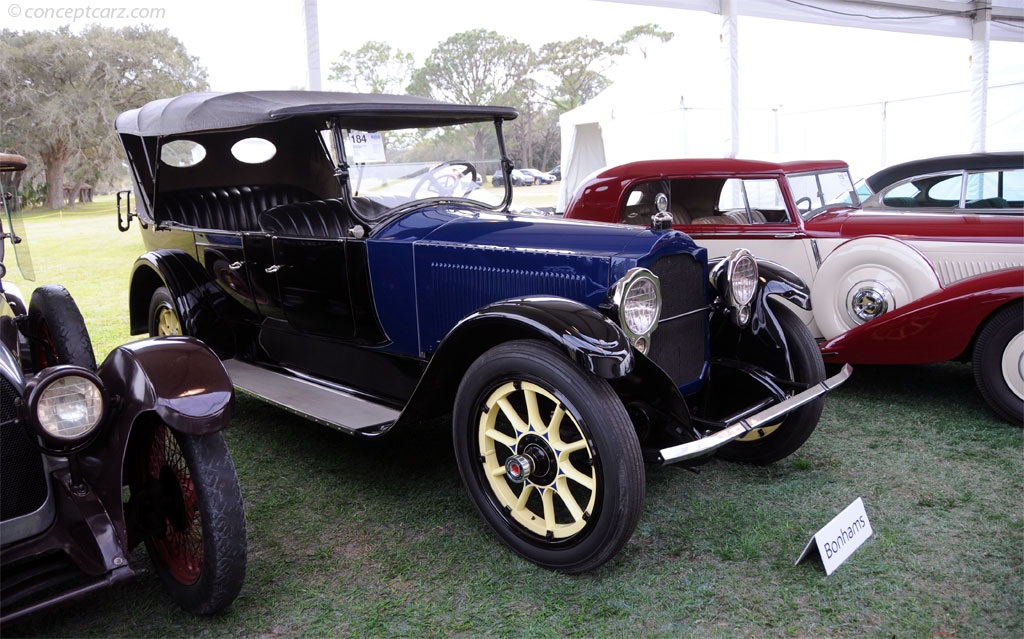
Tourer
Chassis #: 160466
Engine #: 160466
View info and history
Auction entries : 1
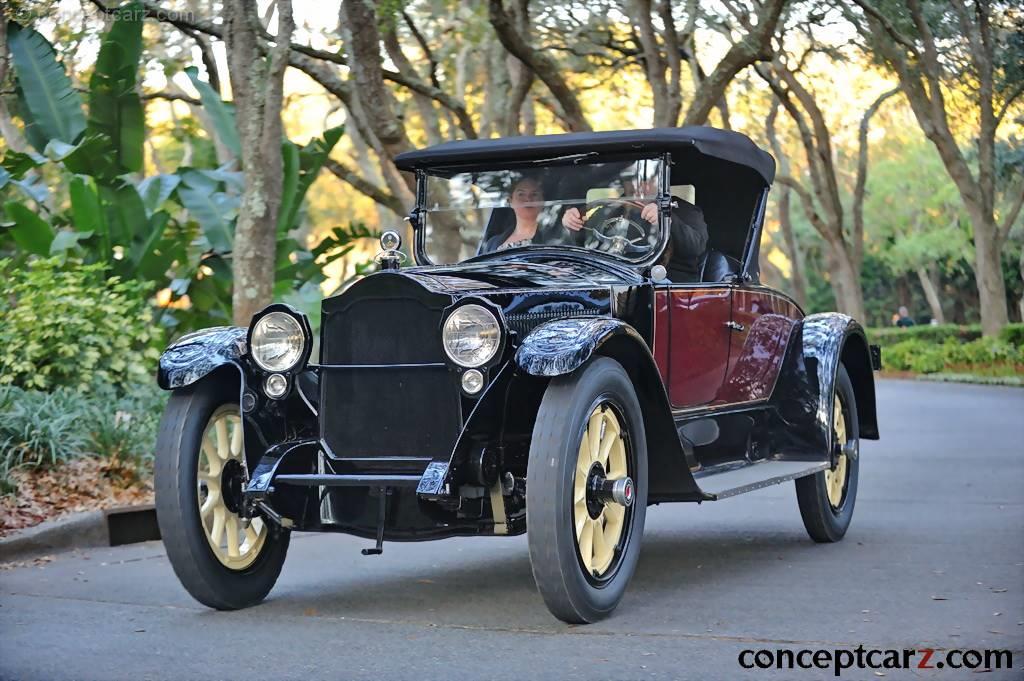
Runabout
View info and history
by Daniel Vaughan | Dec 2020
Designed with a 60-degree V, a 3-inch bore, and a 5-inch stroke giving 424 cubic inch displacement, the Packard Twin Six was the first true production V-12 automobile engine. 
Dual-Winshield Phaeton
View info and historyThe Liberty aircraft was based, in part, on the Twin Six automobile engine Jesse Vincent designed in 1915. Vincent spent three years developing a series of experimental 12-cylinder racecar engines based on the Twin Six, which was ultimately intended for aircraft use.

Dual-Winshield Phaeton
View info and history
Related Reading : Packard Twin Six History
The Packard Twin Six was produced from 1915 - 1923. The name Twin Six would be revived years later eventually becoming known as the Packard Twelve. There were 7,746 examples of the Packard Twin Six sold in 1916, its introductory year, with figures increasing to 8,899 in 1917. This was an amazing accomplishment considering the relatively high starting price of %242,600 that these luxury cars demanded.....
Continue Reading >>
Continue Reading >>
Related Reading : Packard Twelve History
The Packard Twelve was produced from 1933 to 1939 with over 35,000 examples produced. It is considered by many to be one of the finest automobiles produced by Packard and one of the most significant creations of the classic car era. The long and flowing front hood hid a 445 cubic-inch side-valve twelve-cylinder engine that was refined, powerful, smooth, and quiet. The engine was originally destined....
Continue Reading >>
Continue Reading >>
- 1920 Packard Twin Six 3-35 Menu
- Article
- Image gallery
- Valuation
- Specifications
- Profiles
- Production figures
Packard
Similar Automakers
Similarly Priced Vehicles
1920 Packard Twin Six 3-35 Vehicle Profiles
Recent Vehicle Additions
Performance and Specification Comparison
Price Comparison
Twin Six Specification Comparison by Year
Year
Production
Wheelbase
Engine
Prices
Related Automotive News

The Don Williams Collection of Stunning Pre-War Classics, Including 1937 Mercedes-Benz 540K, Will be Offered with No Reserve During Barrett-Jackson's 2024 Scottsdale Auction
Barrett-Jackson, The Worlds Greatest Collector Car Auctions, will offer seven stunning classic vehicles from the Don Williams Collection during the 2024 Scottsdale Auction held January 20-28 at WestWorld of Scottsdale. Each premium vehicle...

Past Best of Show Winners at The Pebble Beach Concours d'Elegance
overview1
The 70th anniversary of the Pebble Beach Concours dElegance was celebrated with a spectacular display of previous Best of Show winners. Thirty-seven examples graced the showfield and many were still with the same owners who raised the trophy...

THE McLAREN F1
FOR THE DRIVER VITALLY – AS IN ONE OF McLARENS WORLD CHAMPION RACING CARS – DRIVER AND VEHICLE BECOME ENTIRELY AS ONE
The primary design consideration for the McLaren F1 has been to make it without reserve a drivers car, an extremely high-performance...

ALFA CHOOSES NEW YORK AUTO SHOW FOR BRAND'S U.S. RETURN
Alfa Romeo will mark its North American return at the 2014 New York International Auto Show with the highly anticipated and high-performance Alfa Romeo 4C.
Coming soon, the all-new Alfa Romeo 4C delivers an exotic mid-engine design inspired by the...

FIVE MILLION AUDI QUATTRO DRIVE SYSTEMS
VICTORY LAP FOR A SUPERIOR TECHNOLOGY
- Five millionth Audi with permanent all-wheel drive rolls off the assembly line
- A successful 33 years for quattro on the road and in motorsport
AUDI AG celebrates a very special event today – the five...

The Champion in Touring Car Racing : The BMW M3
In August 1985, a rumour surfaced in motor magazine Auto-Deutschland which emanated from a new sports car. An A Group Car from BMW that was a thoroughbred racing car according to the rules but was also to be produced in a version licensed to drive on...























